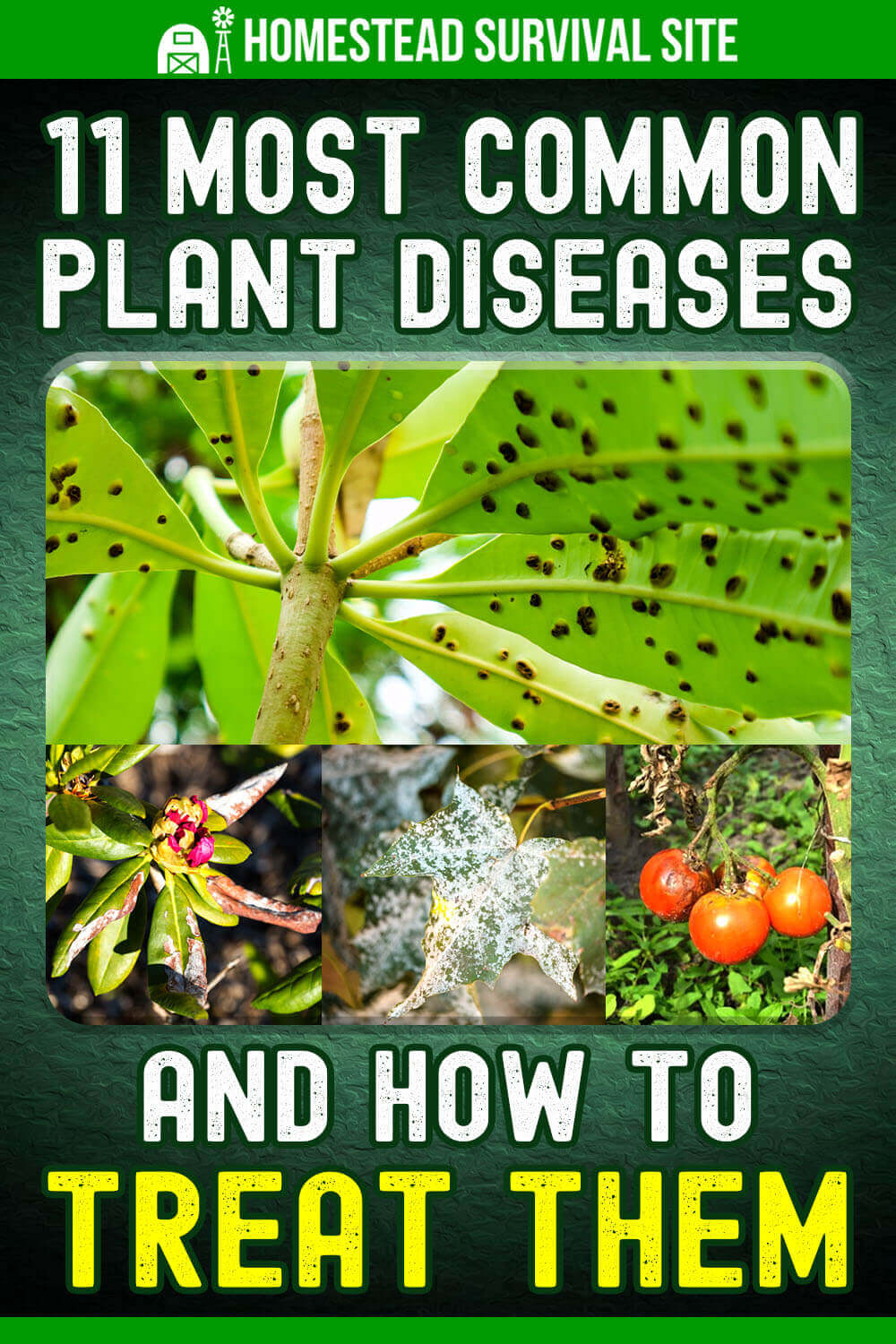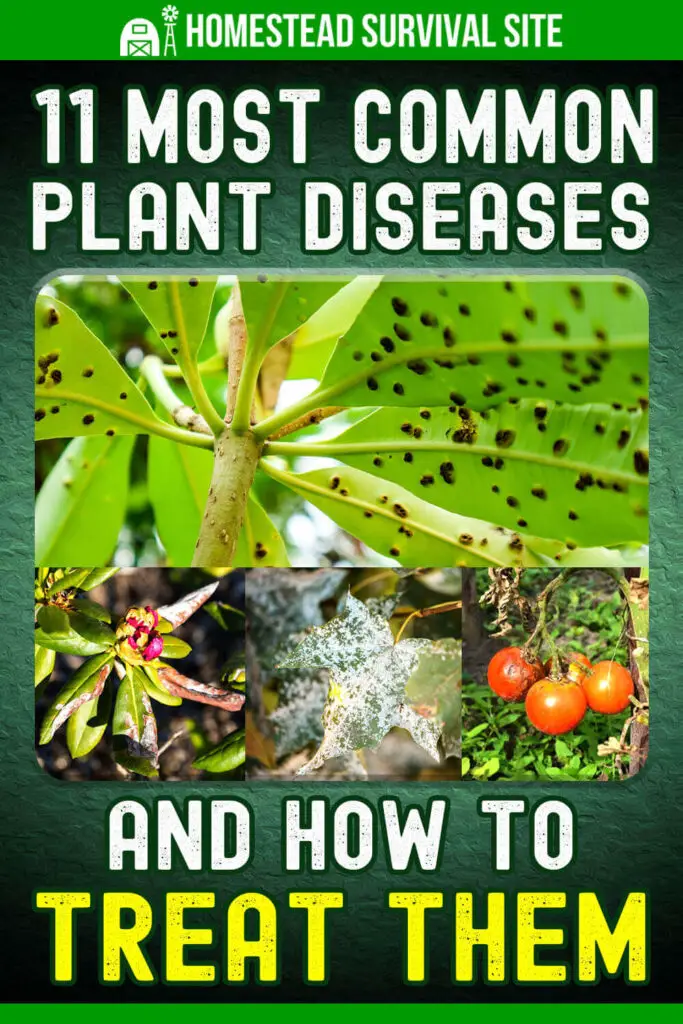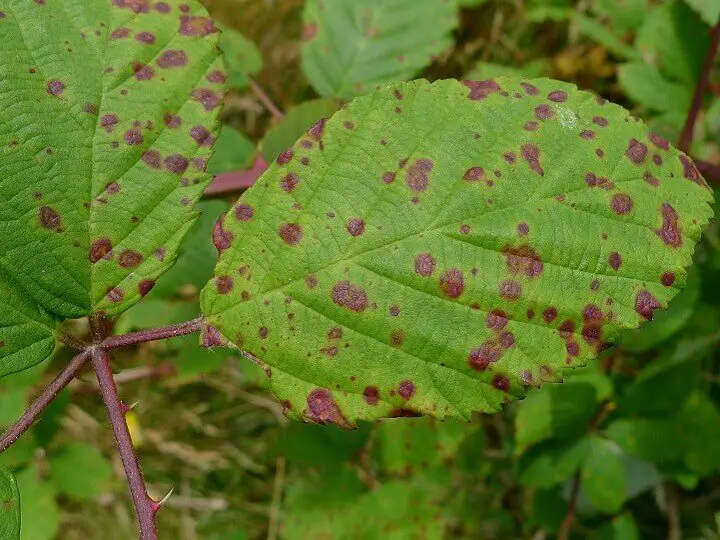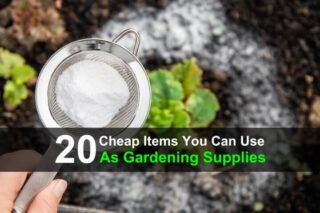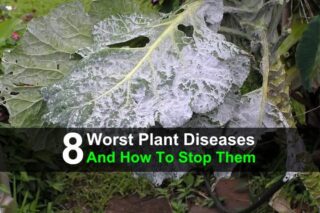Estimated reading time: 9 minutes
Every gardener hopes for a thriving and prolific garden. But just like people, plants can get diseases that may make them sick, hamper their growth, and even cause death. However, taking good steps towards prevention and early treatment can help save your garden and your harvest.
In this article, we’ll talk about the most common plant diseases. Then we’ll take a look at what you can do to prevent these diseases from attacking your plants and how you can treat them if they do occur.
Like this post? Don't Forget to Pin It On Pinterest!
Anthracnose
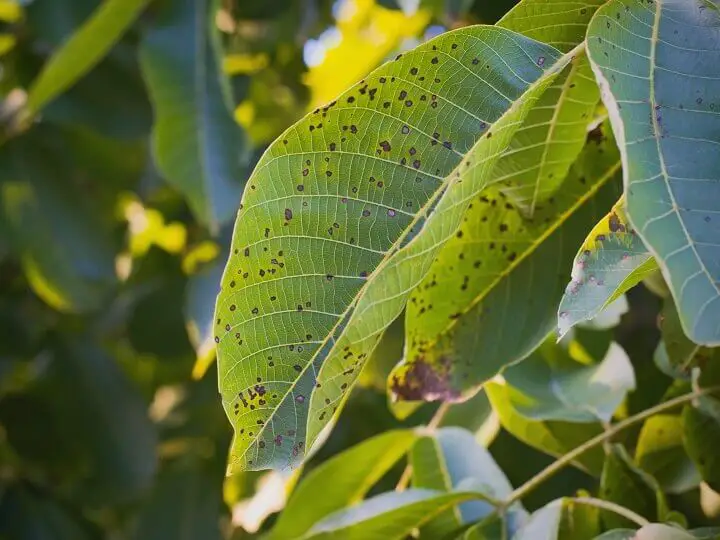
Anthracnose is a fungal disease that affects vegetables, fruits, and even trees. It first appears as small yellow or brown spots, then spreads into large dark lesions. Anthracnose spreads quickly in humid weather, eventually killing your plants. This disease can overwinter in garden debris and reappear in the spring.
Cucurbits, tomatoes, beans, and melons are easily affected by this group of diseases, but it can wreak havoc on your trees as well.
To treat and control anthracnose:
- First, remove and destroy infected vegetable plants. If your trees are affected, you can prune away the branches that show signs of disease.
- Spray with a copper-based fungicide.
To prevent anthracnose:
- Plant resistant crops.
- Water plants at their base, not with overhead sprays.
- Plant vegetables in well-draining soil.
- Use good crop rotation.
Bacterial Leaf Spot
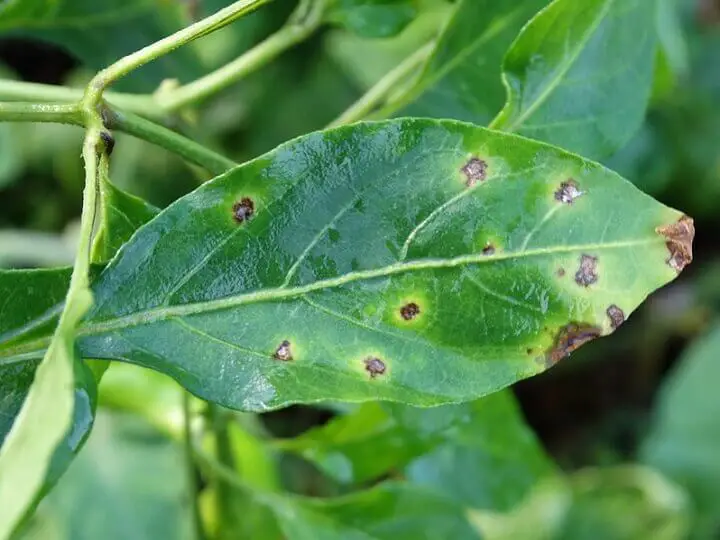
This plant disease shows up as small dark spots with yellow halos. It can easily kill infected leaves and affects peppers, tomatoes, and cabbage crops. It spreads easily in damp, cool weather and can be spread from the soil to the plant. Bacterial spot can even be spread by planting infected seeds.
To treat and prevent bacterial leaf spot:
- Apply copper-based fungicides to prevent the disease from spreading
- Destroy heavily infected plants.
- Practice good crop rotation to prevent bacterial leaf spot from spreading year to year.
Black Spot
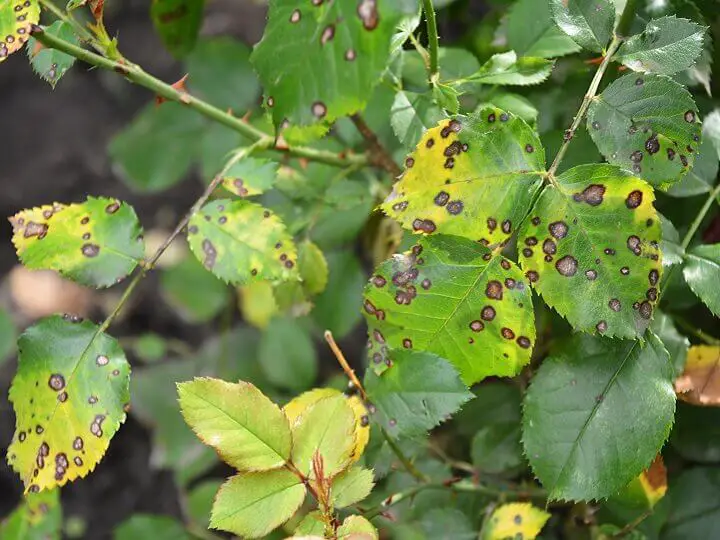
Black spot is a fungal disease that can affect garden plants, especially roses. It causes round black spots to appear on the upper sides of the leaves. Eventually, the leaves turn yellow and fall off.
The spores can survive through the winter in fallen leaves. However, this disease is more likely to happen during long periods of wet weather.
To prevent and treat black spot:
- Healthy plants are more resistant to black spot.
- Remove garden debris to prevent spores from overwintering in the garden.
- Do not put infected plants or waste in your compost pile.
- If plants are infected, be sure to disinfect garden tools after use.
- Water only at the roots to prevent the spread of spores.
Blight
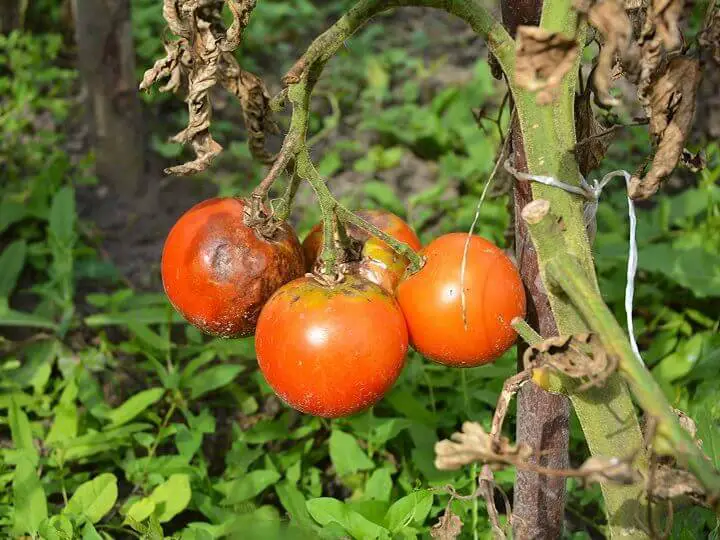
Blight is a fungal disease that spreads through windborne spores and significantly affects tomatoes. Spores can spread rapidly over large areas, but blight can only spread in warm, humid conditions. Unfortunately, there is no cure for blight, but you can take steps to prevent it.
To prevent blight:
- Plant vegetable varieties that are resistant to blight.
- Destroy infected plants in the trash; never put infected plants in your compost pile.
Canker
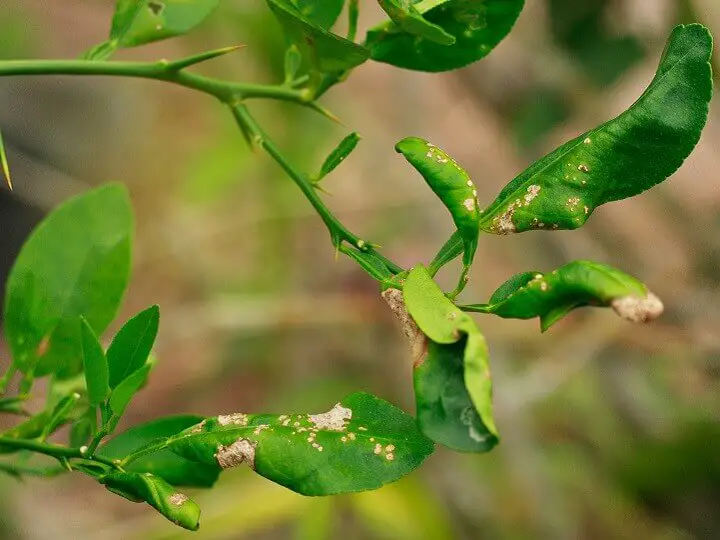
Bacterial canker often shows up on tomato and pepper plants. Younger plants may suddenly wilt, while more established plants may start wilting in just the lower leaves.
Canker spreads easily through contaminated tools, hands, seeds, and splashing water. It survives in plant debris for two years.
To prevent canker:
- Disinfect tools after each use.
- Water in the morning so plants can dry by dark.
- Remove plant debris in the winter.
- Practice good crop rotation.
Clubroot
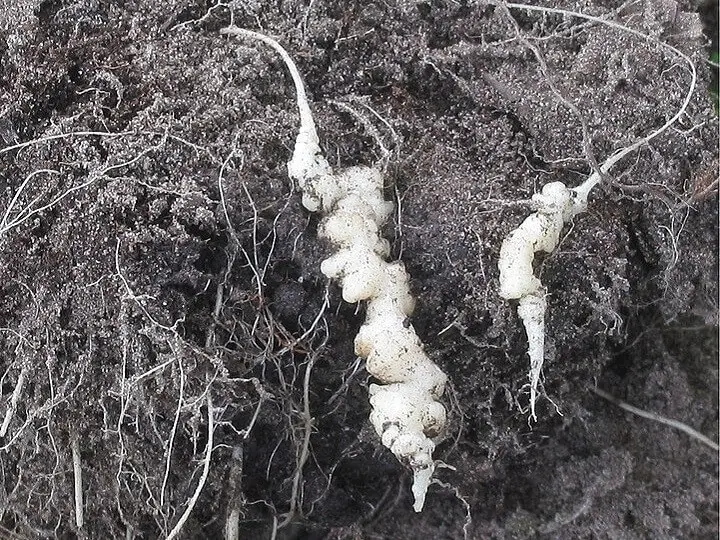
Clubroot is a severe disease that affects brassicas such as broccoli, cauliflower, and cabbage. It is a soil-borne disease that causes distorted roots. As a result, the roots are unable to take in enough water and nutrients for the plant to grow and produce. This, in turn, causes plants to wilt and even die when it is hot.
To prevent clubroot:
- Choose varieties that are resistant to the disease.
- Practice good crop rotation.
Downy Mildew
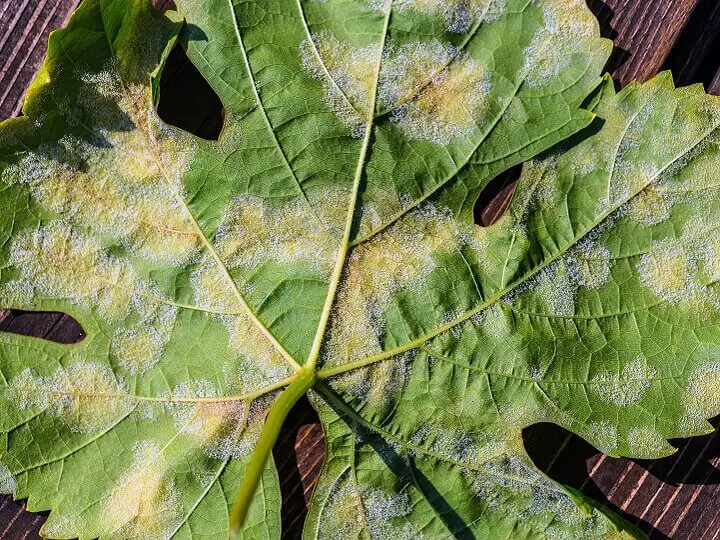
Downy mildew looks like a whitish fuzzy or downy growth underneath a plant’s leaves and yellowish spots on the top. Downy mildew typically occurs during cool, damp weather, such as early spring and fall.
To prevent downy mildew:
- Prune plants for good air circulation.
- Water plants early in the day so they can dry out before nightfall.
- Try to keep water off the leaves of plants to prevent infection.
To treat downy mildew:
- Remove and discard severely infected plants but not in your compost pile.
- Remove plant debris during winter so that the infection does not have a place to grow.
- You can treat early infections with copper fungicides.
Powdery Mildew
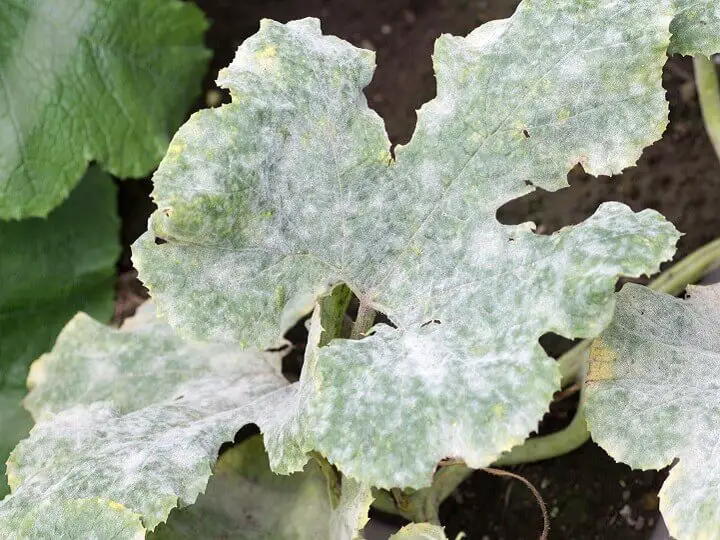
Powdery mildew is a different problem than downy mildew. You’ll see powdery mildew appear on the tops of plant leaves early on. Then, plants may turn brown and die.
To prevent and deal with powdery mildew:
- Spores can overwinter, so be sure to remove garden debris.
- Prune plants with mild infection or remove seriously infected plants.
- Keep plants spaced apart to increase air circulation.
- Dispose of infected plants but keep them out of your compost pile.
Mosaic Virus
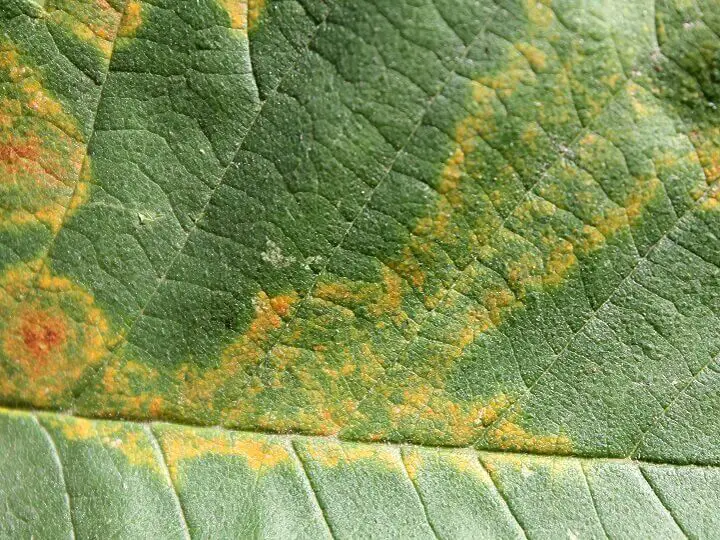
This disease affects plants such as tomatoes, peppers, and beans. Early symptoms of the virus are mottled green and yellow foliage. Growth becomes stunted, and the leaves may wrinkle or curl. There is no cure for the mosaic virus.
To treat mosaic virus:
- Plant varieties of beans, tomatoes, and peppers that are resistant to mosaic virus.
- Control insects that spread the diseases.
- Remove infected plants and dispose of them, but don’t put them in your compost pile.
Rusts
Rusts infect a variety of plants including carrots, onions, and asparagus. However, you’ll mostly see it occur on more mature plants. The plants will show reddish-brown spots that look like rust on their leaves and stems.
To prevent and trust rusts:
- Dusting plants with sulfur powder can keep mild infections from spreading.
- Space plants apart to ensure good air circulation.
- Remove and discard seriously affected plants.
Wilt
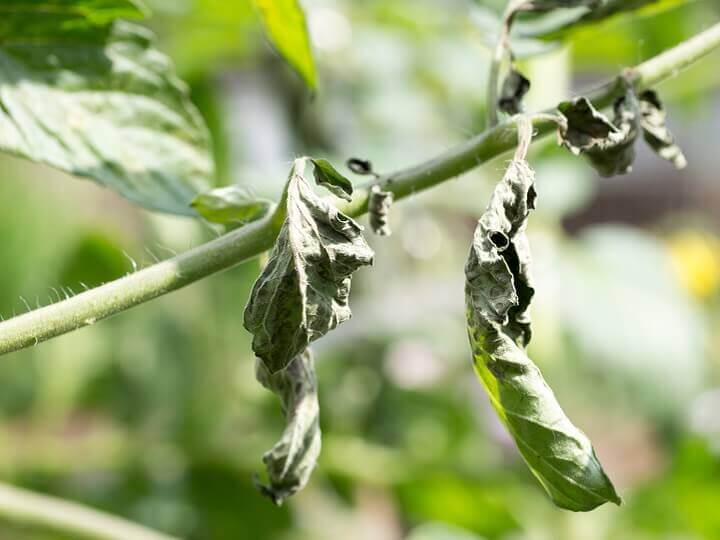
Sings of fusarium and verticillium wilt are plants turning yellow and then wilting. Many vegetables are affected such as potatoes, peppers, melons, and tomatoes.
To prevent wilt:
- Use soil solarization to help kill pests. Soil solarization is the process of putting clear plastic over your soil so it can bake in the sun for 3 to 4 weeks.
- Plant wilt-resistant varieties of vegetables in your garden.
Final Thoughts On Preventing Garden Diseases
It is much easier to prevent garden diseases than it is to treat them. Good garden hygiene will go a long way toward preventing the development and spread of garden diseases. Taking a few simple steps in your garden will help you to have a healthier, more productive harvest:
- Remember to use good crop rotation wherever possible.
- Always sanitize garden tools after use, especially if dealing with infected plants.
- Always dispose of infected plants in the trash and never in your compost pile.
- Don’t touch healthy plants after handling infected plants.
- Water plants at the roots rather than overhead.
- Use well-draining soil.
- Keep plants healthy with good fertilizer.
- Remove garden debris to prevent spores from overwintering.
Like this post? Don't Forget to Pin It On Pinterest!

